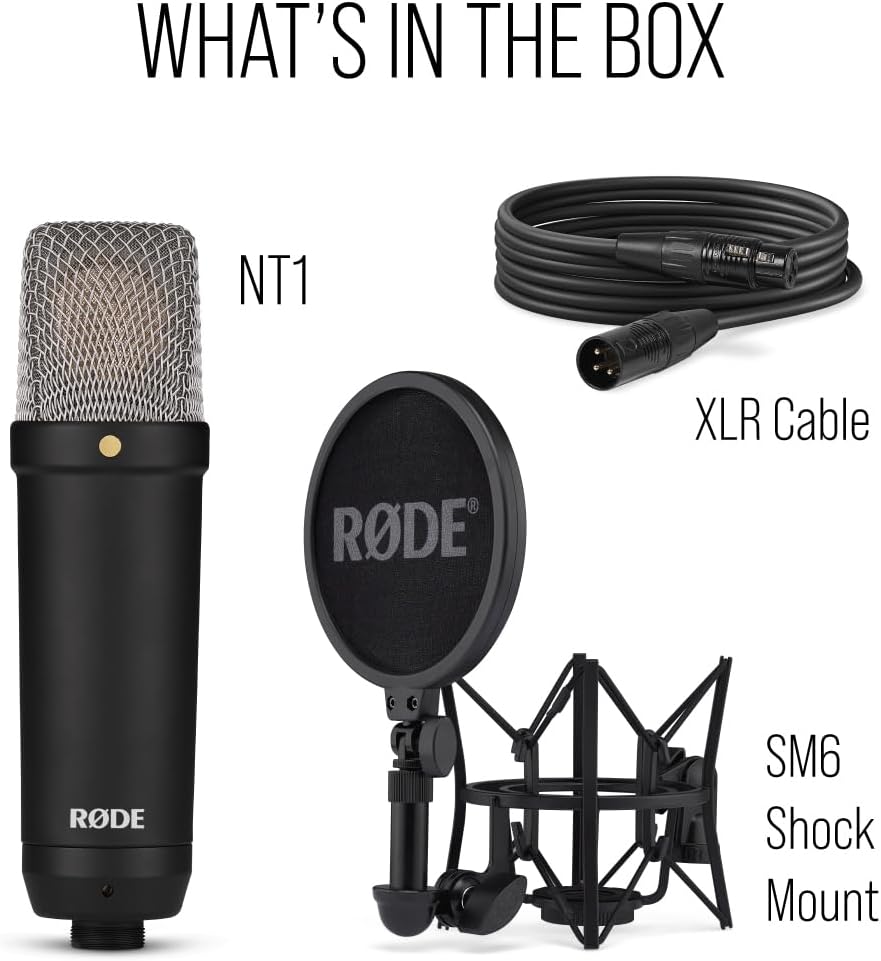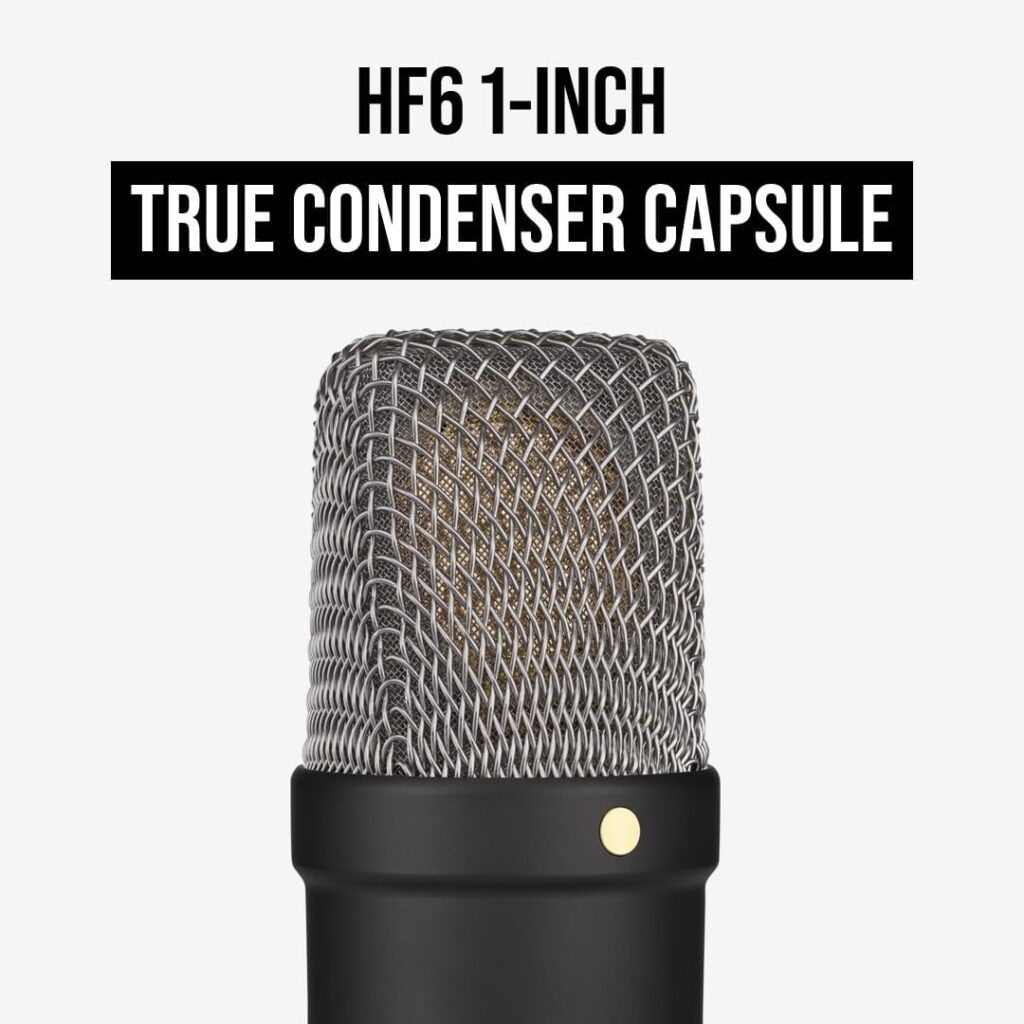Rode NT1-A Review
When it comes to affordable studio microphones, few names resonate as strongly as the Rode NT1-A. Launched by the Australian audio company Rode, the NT1-A has earned a reputation as a go-to choice for home studio owners, podcasters, voiceover artists, and musicians on a budget. With its sleek design, impressive technical specs, and a price point that undercuts many competitors, it’s no surprise that the NT1-A has become a staple in the recording world. But does it truly live up to the hype? In this in-depth review, we’ll explore every facet of the Rode NT1-A—from its build quality to its sound performance—and determine whether it’s the right microphone for you.
Rode NT1-A Review
Before diving into the NT1-A itself, it’s worth understanding the brand behind it. Rode, founded in 1967 by Henry and Astrid Freedman, began as Freedman Electronics in Sydney, Australia. Initially focused on loudspeakers, the company pivoted to microphones in the 1990s, quickly gaining traction with models like the original NT1. The NT1-A, introduced in the early 2000s as an evolution of the NT1, brought significant upgrades, including an ultra-low noise floor that set it apart from its predecessor and competitors alike. Today, Rode is synonymous with high-quality, accessible audio gear, and the NT1-A remains one of its flagship offerings.
Unboxing and First Impressions
Out of the box, the Rode NT1-A exudes a sense of understated elegance. The microphone comes packaged with a shock mount, a pop filter, a 20-foot XLR cable, a dust cover, and an instructional DVD (though the latter feels a bit dated in 2025). The microphone itself sports a satin nickel finish that’s both durable and visually appealing, with a sturdy metal body that feels reassuringly solid in hand. At 326 grams (11.5 ounces), it’s lightweight enough to mount easily yet substantial enough to convey quality.
The included shock mount is a standout accessory. Featuring a dual-lyre suspension system, it effectively isolates the mic from vibrations and handling noise—a boon for anyone recording in less-than-ideal environments. The pop filter, while basic, attaches directly to the shock mount and does a decent job of reducing plosives during vocal recording. Rode’s decision to bundle these essentials makes the NT1-A a ready-to-use package, especially for beginners who might not already own these accessories.
Technical Specifications
The Rode NT1-A is a large-diaphragm condenser microphone with a cardioid polar pattern, meaning it captures sound primarily from the front while rejecting noise from the sides and rear. This makes it ideal for solo vocalists, podcasters, or anyone recording in a space with some ambient noise. Let’s break down its key specs:
- Capsule: 1-inch gold-sputtered diaphragm
- Frequency Response: 20 Hz – 20 kHz
- Self-Noise: 5 dBA (A-weighted)
- Maximum SPL: 137 dB
- Sensitivity: -31.9 dB re 1 Volt/Pascal (25 mV @ 94 dB SPL)
- Impedance: 100 ohms
- Power: 48V phantom power required
The standout figure here is the self-noise rating of 5 dBA, which is remarkably low for a microphone in this price range (typically around $229 USD). To put that in perspective, many competing mics hover around 15-20 dBA, meaning the NT1-A is exceptionally quiet. This low noise floor ensures that recordings remain clean and free of unwanted hiss, even when capturing soft-spoken vocals or delicate acoustic instruments.
The frequency response is flat and neutral across most of the audible spectrum, with a subtle presence boost around 5-10 kHz that adds a touch of brightness and clarity to vocals. The max SPL of 137 dB is respectable, allowing the NT1-A to handle loud sources like guitar amps or drum overheads without distortion, though it’s not designed for the extreme levels some dynamic mics can endure.
Build Quality and Design
Rode has a knack for balancing form and function, and the NT1-A is no exception. The microphone’s body is constructed from high-grade aluminum, finished with a baked electrostatic coating that resists scratches and wear. The grille protecting the capsule is robust yet finely meshed, offering solid protection without compromising sound quality. Unlike some cheaper condensers, the NT1-A feels like it can withstand years of use—a claim backed by Rode’s generous 10-year warranty (with registration).
The cardioid pattern is etched subtly into the body, serving as a helpful reminder of the mic’s sweet spot. There are no onboard switches for pads or filters, which keeps the design clean but might disappoint users who prefer more control directly on the mic. Instead, any adjustments must be made via your preamp or audio interface, which isn’t a dealbreaker but worth noting.
Sound Quality: How Does It Perform?
The true test of any microphone lies in its sound, and the NT1-A delivers in spades. Its sonic character can be described as transparent with a hint of warmth—a rare combination at this price point. The low self-noise is immediately apparent; even in a moderately quiet room, recordings are pristine, with no audible hiss creeping into the mix. This makes it an excellent choice for voiceover work, where clarity is paramount, or for capturing the nuance of acoustic instruments like guitars and pianos.
For vocals, the NT1-A shines with its smooth midrange and gentle high-end lift. It doesn’t impart the aggressive coloration of some vintage-inspired mics, nor does it sound overly clinical like certain high-end studio condensers. Instead, it strikes a balance that flatters a wide range of voices without requiring heavy EQ in post-production. Male and female vocals alike benefit from its natural reproduction, though deeper voices may need a slight low-end boost depending on taste.
When used on instruments, the NT1-A proves surprisingly versatile. Acoustic guitars sound detailed and full, with the mic capturing both the body of the strings and the resonance of the wood. As a drum overhead, it handles transients well, though its max SPL means it’s better suited for lighter playing styles than thunderous metal kits. For electric guitar amps, it holds its own, though pairing it with a dynamic mic in a dual-mic setup might yield richer results.
One potential downside is its sensitivity. The NT1-A picks up everything—room reflections, chair creaks, even distant traffic if your space isn’t treated. This is typical of large-diaphragm condensers, but it underscores the importance of a quiet, controlled environment. The included pop filter helps with plosives, but a more robust external one might be necessary for aggressive vocalists.
Applications: Who Is It For?
The Rode NT1-A’s versatility makes it a jack-of-all-trades in the studio. Here’s how it fits into various workflows:
- Podcasting: Its clarity and low noise make it a top pick for podcasters. Pair it with a decent interface, and you’ve got broadcast-quality sound on a budget.
- Voiceover: Voice actors love the NT1-A for its natural tone and ability to capture subtle inflections without distortion.
- Music Recording: From vocals to acoustic instruments, it’s a reliable workhorse. It’s not the ultimate choice for every source (e.g., screaming metal vocals), but it handles most tasks admirably.
- Streaming/Content Creation: For Twitch streamers or YouTubers, the NT1-A offers a step up from USB mics, delivering professional audio with minimal setup.
That said, it’s not perfect for everyone. If you’re recording in a noisy apartment or need a mic for live performance, a dynamic microphone like the Shure SM7B might be a better fit. The NT1-A thrives in controlled, treated spaces where its sensitivity can be an asset rather than a liability.
Comparisons to Competitors
How does the NT1-A stack up against the competition? Let’s look at a few alternatives:
- Audio-Technica AT2035 ($149): Slightly cheaper, with a warmer tone and onboard pad/filter switches. However, its self-noise (12 dBA) is higher, making it less ideal for quiet sources.
- AKG C214 ($399): A step up in price and build, with a more detailed high end. It’s a pro-level option, but the NT1-A holds its own for half the cost.
- Neumann TLM 102 ($699): The gold standard for condensers, with superior clarity and build. Yet, the NT1-A gets remarkably close for a fraction of the price.
The NT1-A’s killer feature is its noise performance. Few mics under $300 can match that 5 dBA self-noise, giving it an edge in clean recordings.
Pros and Cons
Pros:
- Ultra-low self-noise (5 dBA)
- Clear, natural sound with a subtle presence boost
- Solid build and attractive design
- Excellent value with included accessories
- 10-year warranty
Cons:
- Highly sensitive to room noise
- No onboard pad or filter switches
- Pop filter could be sturdier
Final Verdict: Is the Rode NT1-A Worth It?
After spending time with the Rode NT1-A, it’s easy to see why it’s a studio favorite. It offers a rare blend of affordability, quality, and versatility, making it an ideal entry point for anyone serious about recording. Its low noise floor and transparent sound punch well above its weight, rivaling mics that cost twice as much. While it demands a quiet environment and lacks some advanced features, these are minor trade-offs for what you get at this price.
For beginners building their first studio or seasoned pros needing a reliable all-rounder, the NT1-A is a no-brainer. It’s not the flashiest or most specialized mic on the market, but it doesn’t need to be. What it does, it does exceptionally well—delivering clean, professional recordings without breaking the bank. In 2025, as audio gear continues to evolve, the NT1-A remains a timeless classic that proves you don’t need to spend a fortune to sound like a million bucks.



